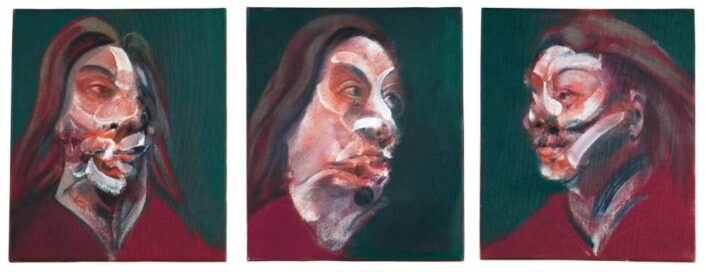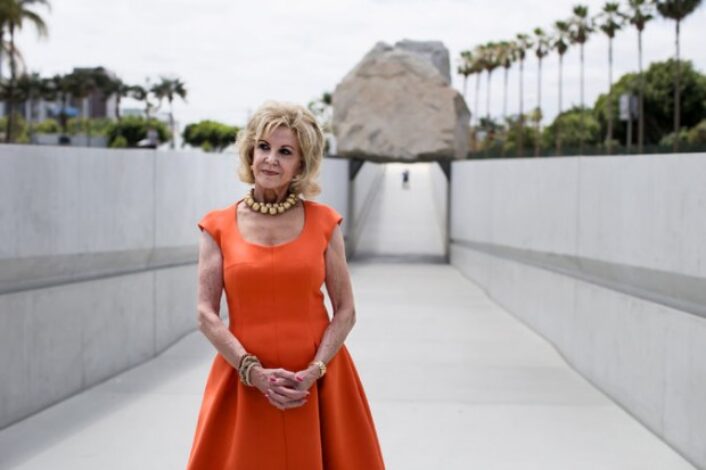Fine Art
Bacon: Books and Paintings exhibition
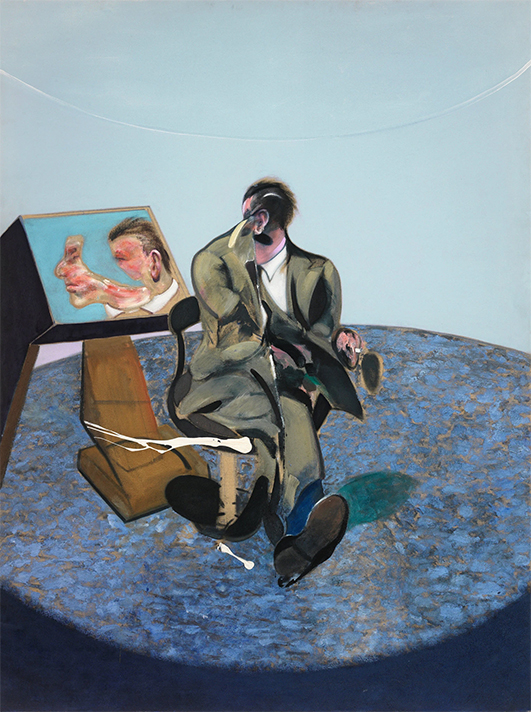
“Portrait of George Dyer in a Mirror”, 1968. George Dyer was Bacon’s partner who committed suicide in 1971, three years after this piece was painted. Image courtesy of: The New York Times
A new exhibition at the Centre Pompidou is hoping to change the image of Francis Bacon. To many people, the Bacon paintings they are familiar with evoke a series of screaming popes. Bacon’s “pope series” was inspired by Diego Valazquez’s “Portrait of Innocent X” from the mid-1600’s. This series is probably the most extensively featured in exhibitions and auctions, certainly in recent years. In addition, these paintings pinpoint the height of the Irish-born painter’s career.
Nevertheless, Center Pompidou’s curator Didier Ottinger is staging an exhibition which examines the last two decades of Bacon’s career. Between 1971 and 1992, Bacon stopped painting popes… and some experts believe that this period marked Bacon’s best works.
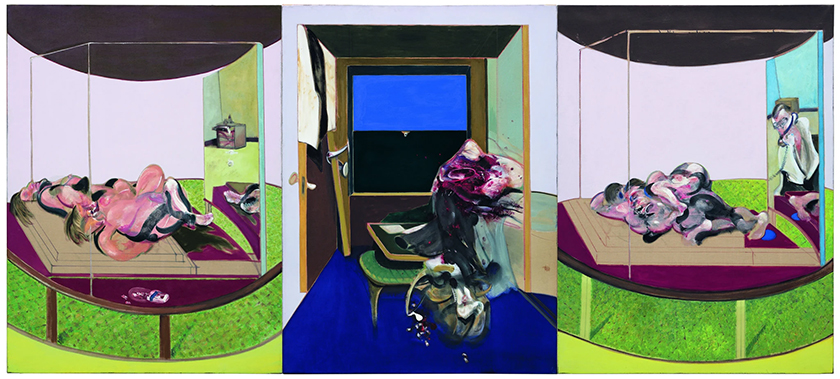
“Triptych Inspired by T.S. Eliot’s ‘Sweeney Agonistes’”, 1967. Oil on canvas. Dimensions: 198 cm. x 147.5 cm. (each). Image courtesy of: The New York Times
The exhibition features sixty works, of which twelve are triptychs. Perhaps more than any other art form, literature shaped Bacon’s works. The artist had a huge library in his London studio… books were scattered both on shelves and on the floor.
With a childhood that didn’t offer much solace and guidance (family relationships faltered after Bacon’s father discovered that he was homosexual), books became the way Bacon created a new version of himself. It is no surprise that Bacon favored tragic novels, as he related those stories to his own troubled life.
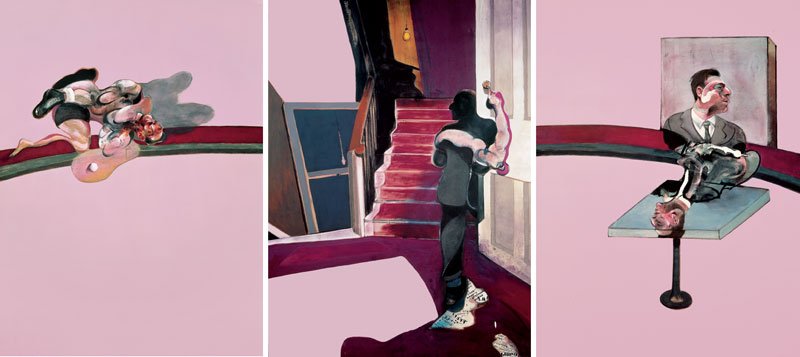
“In Memory of George Dyer”, 1971. Oil on canvas. Dimensions: 198 cm. x 147.5 cm. (each). Image courtesy of: Tate
Many experts believe that the turning point of Bacon’s prolific career occurred during his retrospective at Paris’ Grand Palais. The show opened in October of 1971… Bacon became only the second living artist to score a show at the revered exhibition space. International recognition was instantaneous, and the retrospective offered Bacon an opportunity to revisit his own career.
Sadly, two days before the show opened, Bacon’s partner, George Dyer committed suicide in a Paris hotel. The event was life-changing and career-altering for Bacon. Works from 1971 onward often featured Dyer, and had a different feel than Bacon’s earlier works.
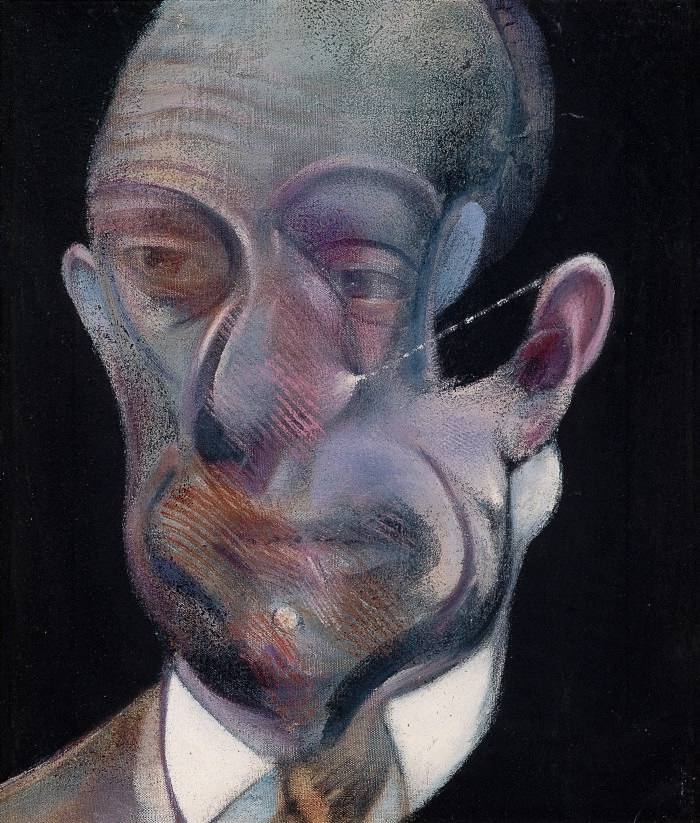
“‘Study for Portrait’ (Michel Leiris)”, 1978. Oil and aerosol paint on canvas. Dimensions: 35.5 cm. x 30.5 cm. Image courtesy of: Financial Times
Bacon was immensely influenced by Dyer’s death, and the guilt that came along with it. As triptychs became the artist’s means for making major statements, he began painting panels upon panels in memorial to Dyer. His art became more somber, inward-looking, and preoccupied with the passage of time and death. As his art became more polarizing, Bacon himself became more isolated.
Didier Ottinger, the show’s curator confirms, “There is a qualitative chasm between the end and the beginning of Bacon’s career. We’re practically not talking about the same artist.”
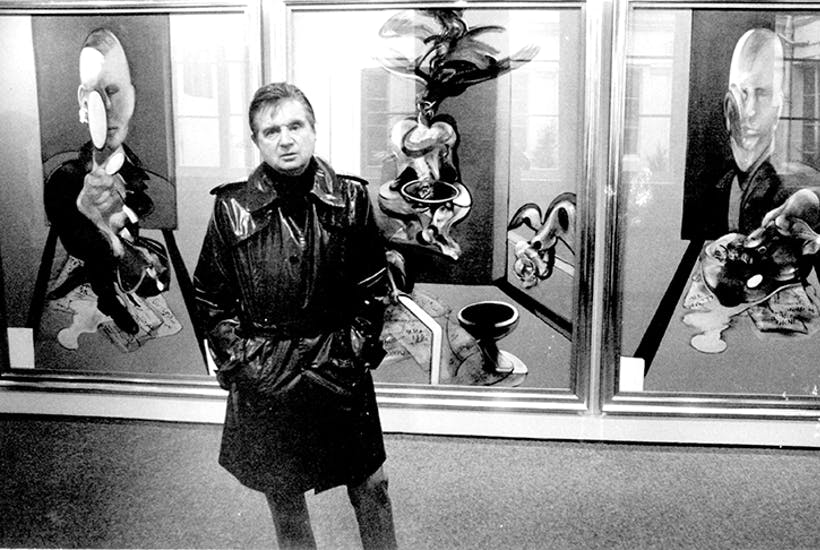
Francis Bacon in front of his triptych at Paris’ Galerie Claude Bernard in the Rue des Beaux Arts, 1977. Image courtesy of: Spectator
In 2016, Ottinger developed the idea for the exhibition after visiting the “Francis Bacon, Monaco and French Culture Show” at the Grimaldi Forum in Monaco. Walking through the exhibition, Ottinger realized that the late Bacon paintings were the standouts. It was while researching for the show that he discovered that many of Bacon’s works were inspired by the books he was reading. Thus, the show will contain six enclosures dedicated to a different author: Aeschylus, Friedrich Nietzsche, Georges Bataille, Michel Leiris, Joseph Conrad, and T. S. Eliot.
